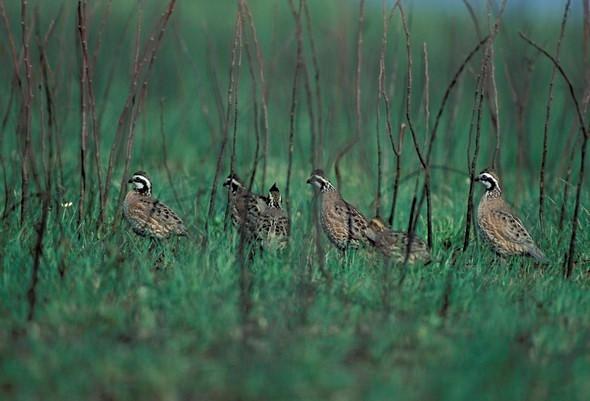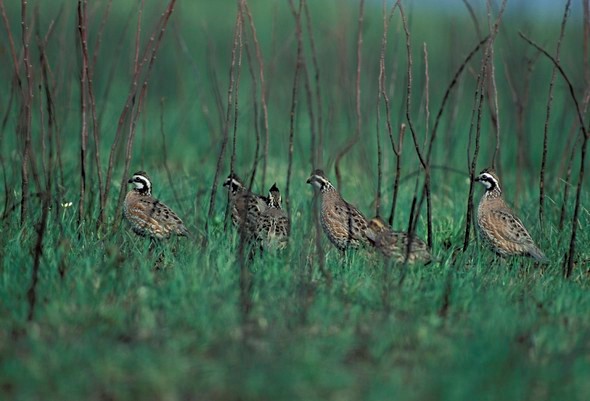
Xplor reconnects kids to nature and helps them find adventure in their own backyard. Free to residents of Missouri.


































Stay in Touch with MDC news, newsletters, events, and manage your subscription

Xplor reconnects kids to nature and helps them find adventure in their own backyard. Free to residents of Missouri.

A monthly publication about conservation in Missouri. Started in 1938, the printed magazine is free to residents of Missouri.


CAPE GIRARDEAU, Mo. – Missouri Department of Conservation (MDC) wildlife biologists are spending time in the field tuning their ear to the sound of quail coveys. A group of quail is called a covey. Quail form their coveys, as few as five birds to as many as 50, in late summer and stay together through the fall and winter. By listening to the calls, biologists can estimate the quail population in a particular area.
“If you think you’ve got quail on your land, now’s the time to know for sure,” said Kara McSpadden, a MDC private land conservationist. “Step outside about thirty minutes before sunrise and if they’re there, you’ll hear them calling to other coveys.”
MDC monitors quail populations on both conservation areas and on private ground in quail restoration landscapes throughout the state. One reason to monitor is to see if concentrated conservation efforts are making a difference. Also, having population trends on quail and any bird species over long periods of time gives biologists insight on how the species is doing in Missouri. McSpadden said the population surveys are used to set hunting limits and estimate hunting prospects on conservation areas. MDC takes the data from fall covey counts on conservation areas and private lands across the state to analyze population trends over time. Biologists can see where efforts are making a difference and where they may need to redirect funding and staff time to a better use.
“When I hear multiple coveys calling on a survey site just before daybreak, it gives me hope,” she said. “Hearing a healthy population of calling quail tells me that hours of conversations with landowners and all the behind the scenes work we’ve done together to sign up for cost-share programs are all worth it.”
Quail, like most grassland birds are on the decline nationwide, she said, adding that she hopes landowners are considering areas on their land where wildlife and native plant species can continue to exist.
“If you only own a yard or a patio, you may not be able to manage for quail, but growing native plants will truly help our native songbirds and pollinators that are also on the decline,” she said. “If you wish to get involved, there are several organizations working to restore grassland bird habitat in Missouri including Quail Forever, the Audubon Society and the Missouri Prairie Foundation.”
McSpadden said as landowners get out to evaluate their resident quail, it’s helpful to know that it’s much easier to hear quail than to see quail. For their habitat, quail need plenty of areas that one might call ‘brushy and weedy’, she said, adding that she often asks landowners, “Do you have brushy and weedy areas on your property, or is your overall property neat and clean?”
Most of the time, areas that are neat and clean to the human eye are void of wildlife. Though quail are a “grassland” bird, grass is a bit of a misnomer.
“Missouri’s traditional grasslands would have been dominated by a diverse mix of broadleaf plants like ragweed and wildflowers, with patches of shrubs like blackberries,” McSpadden said.
However, if your land looks neat and clean, void of native Missouri grasses or wildflowers, there’s always time to turn some of it back to traditional habitat, McSpadden encouraged.
“Good quality habitat takes management, but you don’t have to be a rocket scientist to manage for quail,” she said. “You just need to first have or create those brushy and weedy areas on your property, then you can either burn or disk them every two to three years.”
For cattle farmers, converting just ten percent of pasture to native warm season grasses and allowing patches of brush to grow will help quail. For most landowners in Missouri, a reduction of mowing and bush hogging will do tremendous things for wildlife habitat.
McSpadden said there are several conservation areas where people can see or hear quail and get a look at what quail habitat looks like, including Crowley’s Ridge Conservation Area (CA), Maintz CA and Sand Prairie CA. Landowners can also learn habitat management techniques and find a private land conservationist to work with at www.mdc.mo.gov/property. Information on quail in Missouri can be found in MDC’s online field guide at https://nature.mdc.mo.gov/discover-nature/field-guide/northern-bobwhite-bobwhite-quail.